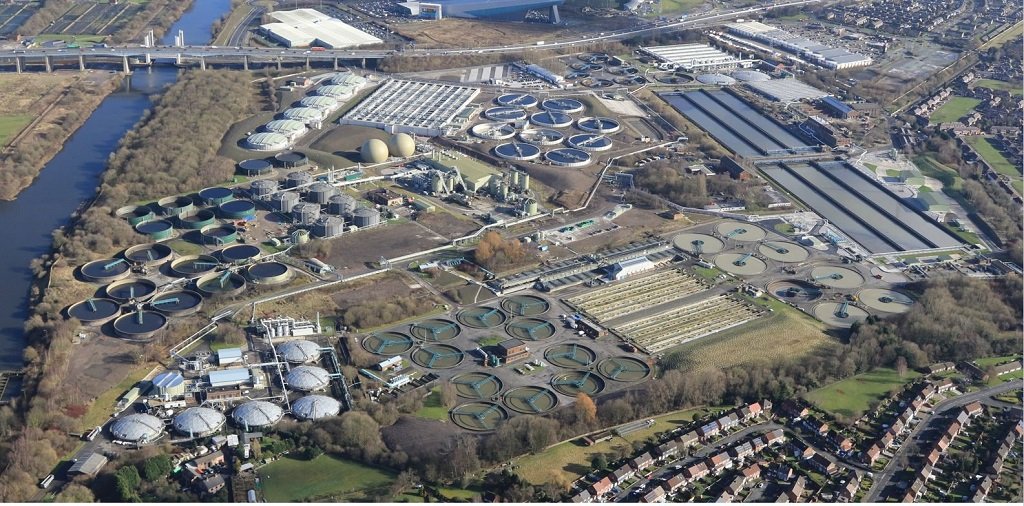Reducing the amount of phosphorus leaked into the environment is the first order of business for the water company’s proposed upgrades to the Davyhulme wastewater treatment works.
United Utilities has submitted a planning application to Trafford Council to construct a building devoted to new technology that helps cut back on the amount of phosphorus that remains in treated wastewater. This will help with nutrient neutrality concerns and lead, ideally, to less water pollution.
The move is the first part of a 10-year, £350m plan to upgrade the facility. Other phases include initiatives to reduce the biochemical oxygen demand to help improve water quality and the expansion of its bioresources centre, which turns waste into power.
United Utilities is working with Murphy, C2V, Kier, and Jacobs on the project.
Davyhulme’s wastewater treatment works dates to 1894, with some of the original sewers still being used by United Utilities. It is a historical landmark for wastewater treatment – as it was at Davyhulme that engineers Edward Arden and W.T. Lockett discovered the activated sludge process in 1913. That process, which involves using microorganisms to nullify waste, is still used today.
The facility is continuing its history of innovation. United Utilities is working with climate tech firm Levidian at the bioresources centre to explore how biogas from wastewater can be used to create hydrogen and graphene.
Andrew Cunliffe, wastewater business lead for Greater Manchester at United Utilities, said: “Many people won’t realise the significance of Davyhulme and the part it has played in pioneering modern sewerage techniques. This huge investment over the next ten years will ensure we continue to meet the demands of the city’s growing population whilst improving water quality in the Manchester Ship Canal.”
The treatment facility has received a number of investments over the years, with the most recent programme of work totalling £200m and completing in 2018.

